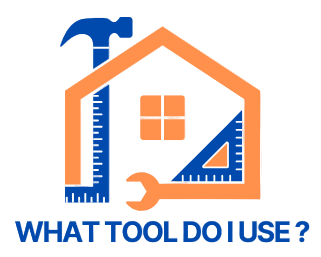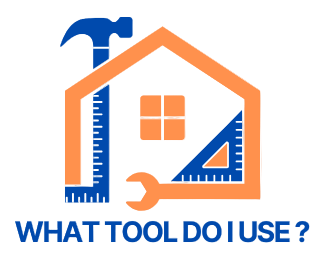Using a power drill might seem daunting for first-time DIYers, but with the right approach it quickly becomes an indispensable tool that makes countless tasks easier and faster. Whether you’re assembling furniture, installing shelves, or starting your first woodworking project, learning how to use a power drill safely for beginners is a vital skill. 🔧🙂
This guide walks you through everything from understanding your drill to proper drilling techniques and safety best practices. Let’s build your confidence so you can use your drill effectively from the start. ✅
📖 View Table of Contents
Understanding the Basics of a Power Drill
Before you pick up your power drill, it helps to understand what it is and how it works. A power drill is a handheld tool that rotates a “bit”, most commonly used for drilling holes or driving screws. It runs from a corded mains supply or a rechargeable battery. 🔋
Power drills are versatile and essential for woodworking, metalworking, home repairs, and even crafts. But if you haven't used one before, using one incorrectly can damage materials or, worse, cause injury. That’s why understanding how to use a power drill safely is essential. 🦺
Parts of a Power Drill and What They Do
To use your drill confidently, get familiar with these key parts:
- Chuck: Holds the drill bit. Most modern drills have a keyless chuck you can tighten by hand. 🔩
- Trigger: Controls speed. The more pressure you apply, the faster the bit spins.
- Forward/Reverse Switch: Changes direction for drilling in or removing screws.
- Torque Adjustment Ring: Controls how much force is applied when driving screws.
- Speed Settings (Gear Switch): Low for screwdriving, high for drilling holes.

Safety Gear You Need Before Using a Drill
Your safety matters. Even a beginner-friendly cordless drill can cause harm if used carelessly. Always wear the following gear before you start:
- Safety glasses: Protect your eyes from debris and dust. 👓
- Ear protection: Drills can be loud, especially on high torque settings. 🎧
- Dust mask: Particularly when you are drilling into plasterboard or treated wood. 😷
- Work gloves: Improve grip and prevent minor cuts or burns. 🧤
- Proper footwear: Closed toe or steel toe caps protect against falling tools. 👟
Tip: Avoid loose clothing or jewellery that could get caught in moving parts.
✅ See also: How Do I Stay Safe When Using Power Tools for the First Time?
✅ Related article: Common DIY Tool Safety Mistakes and How to Avoid Them
Choosing the Right Drill and Bit for the Job.
Not all drills or bits are created equal. Picking the wrong one can lead to poor results or even damage. Cheap bits can seem like a money saver but often are not up to the job or only last a short time.🧠
Types of Power Drills
- Cordless drill: Ideal for beginners; portable and easy to handle.
- Hammer drill: For masonry and concrete; heavier and less beginner-friendly.
- Drill drivers: Versatile and great for general home projects.
Types of Drill Bits
- Twist bits: For wood, plastic, and light metal.
- Spade bits: For larger holes in wood.
- Masonry bits: For concrete, brick, and stone.
- Driver bits: For driving screws (Phillips or flathead).
Rule of thumb: Match the drill bit to both the material and the task. 🎯
✅ See also: How Do I Know Which Drill Bits to Use for Different Materials?
Step-by-Step Guide on How to Use a Power Drill Safely for Beginners
Let’s go through the process step by step so you can build good habits from the start. 🪜
- Inspect your drill: Check for loose parts, frayed cords, or a low battery.
- Secure the bit: Insert and hand tighten until it is firm, then gently tug to confirm it’s locked. 🔒
- Mark your spot: Use a pencil or centre punch for accuracy.
- Clamp your material: Prevent movement with a clamp or vice. 🗜️
- Set speed and torque: start low, increase only if it is needed.
- Hold correctly: One hand on the grip, the other steadying the front, elbows close.
- Start drilling: Apply a steady pressure and let the drill do the work. ♨️
- Withdraw slowly: Ease off the pressure and let it spin out to avoid splintering.
Common Mistakes and How to Avoid Them
- Using the wrong bit: Match it to your material.
- Applying too much pressure: Let the motor do the work.
- Not securing the material: Always clamp it down.
- Starting too fast: Begin slowly for control.
- Ignoring overheating: Stop if the bit smokes or feels too hot.
Maintenance Tips to Keep Your Drill Working Safely
- Clean after use: Remove dust, shavings, and grease.
- Store in a dry place: Prevent rust and damage.
- Keep batteries charged: Avoid overcharging or deep discharges.
- Replace worn bits: Dull bits require more force and can slip.
- Check cords: Look for cracks or fraying on corded drills.
Conclusion: Practice Makes Confident DIYers
Learning how to use a power drill safely for beginners is a foundation for becoming a confident DIYer. It’s not just about which buttons to press, it’s about developing safe, smart habits that protect you, your materials, and your tools. 🧰
Start small, stay patient, and always double check your setup before you pull the trigger. You’ve got this! 💪
Read Next:
- 🔍 How Do I Stay Safe When Using Power Tools for the First Time?
- 🪚 How Do I Know Which Drill Bits to Use for Different Materials?
- ⚠️ Common DIY Tool Safety Mistakes (and How to Avoid Them)
🛠 Useful Tools & Accessories for Circular Saw Safety
🔒 Affiliate links: This post may include affiliate links, meaning I may earn a small commission if you buy through them, at no extra cost to you. I only recommend tools I trust and use myself.
🔗 Recommended: BLACK+DECKER 18V Hammer Drill (with Battery & Charger)
Perfect for drilling pilot holes and securing timber before cutting, essential for safe, controlled sawing.
View Product🔗 Recommended: AirGearPro G-500 Respirator & Goggles Set
Filters fine sawdust and keeps your airway clear when cutting indoors or in garages.
View Product🔗 Recommended: 3M WorkTunes Bluetooth Ear Defenders
Reduces loud circular-saw noise and protects your hearing during long cutting sessions.
View Product🔗 Recommended: HOMCOM Adjustable Steel Trestles (Set of 2)
Creates a safe, stable cutting platform and prevents dangerous material movement.
View Product🔗 Recommended: Jorgensen 150 mm Woodworking Clamps
Secures your timber firmly so it doesn’t shift, twist or kick back while cutting.
View Product🔗 Recommended: WORKPRO 12" Combination Square
Ensures straight, square marking lines to prevent blade binding and unsafe cuts.
View Product





